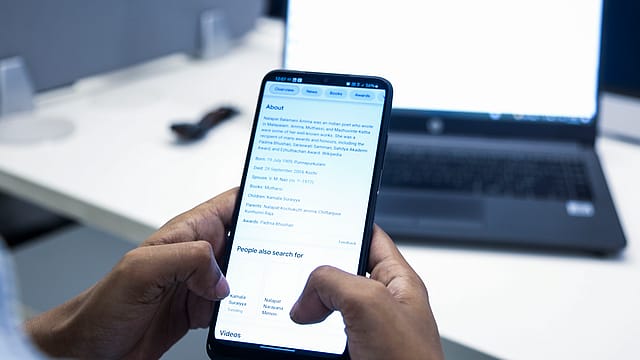'Half-truths, falsehoods': Rajeev Chandrasekhar on Raghuram Rajan's criticism of PLI scheme for mobile phones
ADVERTISEMENT

Rajeev Chandrasekhar, minister of state for electronics and information technology, has issued a rebuttal to former RBI governor Raghuram Rajan's remarks in which he criticised the government’s Production Linked Incentive Scheme (PLI) for mobile phones.
Rajan, the Katherine Dusak Miller Distinguished Service Professor of Finance at the University of Chicago's Booth School of Business, US, had written an article, questioning India's manufacturing capabilities when it comes to mobile phones.
"...the lack of progress thus far raises concerns about the government’s entire flagship strategy for creating manufacturing jobs, the PLI scheme," he wrote.
Rajan said India certainly "cannot claim the rise in exports of finished cell phones is evidence of India’s prowess in manufacturing". He said manufacturers are likely engaging only in assembly, which they seem to have been doing even before tariffs were introduced.
"This is a minuscule portion of the final value of the mobile phone. For instance, for the Apple iPhone 12 Max, industry estimates are that Foxconn’s value added from final assembly and testing is about 4 percent of the manufacturing costs, which in turn are about 1/3rd of the value of the mobile phone," Rajan and his co-authors, Rahul Chauhan, and Rohit Lamba wrote in the note shared on social media platform LinkedIn.
January 2026
Netflix, which has been in India for a decade, has successfully struck a balance between high-class premium content and pricing that attracts a range of customers. Find out how the U.S. streaming giant evolved in India, plus an exclusive interview with CEO Ted Sarandos. Also read about the Best Investments for 2026, and how rising growth and easing inflation will come in handy for finance minister Nirmala Sitharaman as she prepares Budget 2026.
The note said the government, which should have better data on value-added, should undertake a detailed assessment of how many PLI jobs have been created, the cost to the country per job, and why the PLI scheme does not appear to have worked so far before extending to new sectors.
In his response, Rajeev Chandrasekhar said Rajan's article is built on the false premise that all key electronics imports are only for the purposes of mobile production. "This is the first lie. #Mobile production utilises only part of the total key imports of $32.4 billion. Every other conclusion that follows is consequently flawed," he said.
Countering the claim, the Union minister said the imports linked to mobile phone manufacturing are merely $22 billion out of the total $32.4 billion -- only 65% is used for total mobile manufacturing. "Now, the real math emerges. The net foreign exchange outflow, therefore, on account of mobile phone manufacturing for FY2023 is $10.9 billion, and not $23.1 billion, as the article falsely states."
He said Rajan exaggerated the foreign exchange outflow by more than 110%, “purely to mislead readers, sensationalise the trade deficit, and put down the PLI Scheme as a failure”.
He said the former RBI government projected all mobile phones produced in India are a result of the PLI Scheme. "This is also wrong. Of the total mobile phone production of $44 billion, only ~$10 billion or 22% was eligible for PLI incentive in 2023."
He said the piece linked the article to low-value addition -- by adding up import figures of components such as PCBAs, displays, batteries, cameras, and chargers. "It assumes that all such imports are not just for mobile phone production but for mobile phones produced under the PLI scheme. This, too, is wrong."
The minister said it deliberately ignored the positives like 1,20,000 new direct jobs created and nearly 2,50,000 new indirect jobs in 24 months. "This is a conservative estimate." He said 70% of new blue-collar jobs have gone to women. "A 1,400% increase in mobile production after Congress-led government completed its term in 2014 (from $3 billion to $44 billion in 2023)."
The minister says the author further passes off PLI as some sort of largesse. "Nothing could be further from the truth. The PLI scheme has three clear characteristics...firstly, it addresses disabilities...secondly, the PLI scheme is a replacement for the MEIS scheme...and finally, the PLI scheme - as Rajan recognises, but refuses to explain the significance of it – is consistent with the WTO regime."
